The NVIDIA GeForce GTX 1650 Review, Feat. Zotac: Fighting Brute Force With Power Efficiency
by Ryan Smith & Nate Oh on May 3, 2019 10:15 AM ESTCompute & Synthetics
Shifting gears, we'll look at the compute and synthetic aspects of the GTX 1650. As we've seen the GTX 1660 Ti and GTX 1660 already, we aren't expecting anything too surprising here.
Beginning with CompuBench 2.0, the latest iteration of Kishonti's GPU compute benchmark suite offers a wide array of different practical compute workloads, and we’ve decided to focus on level set segmentation, optical flow modeling, and N-Body physics simulations.
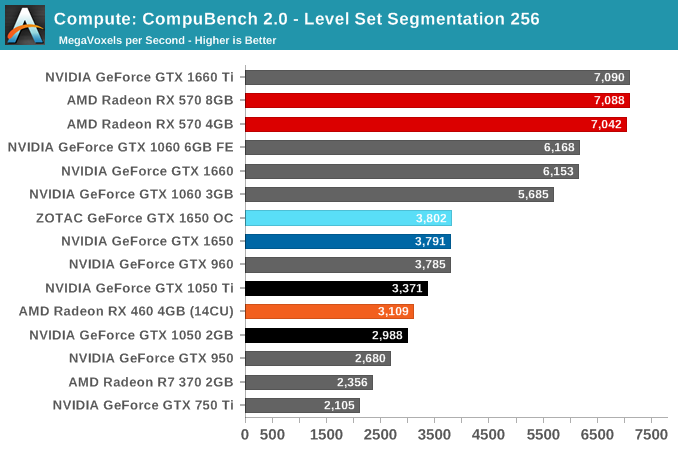
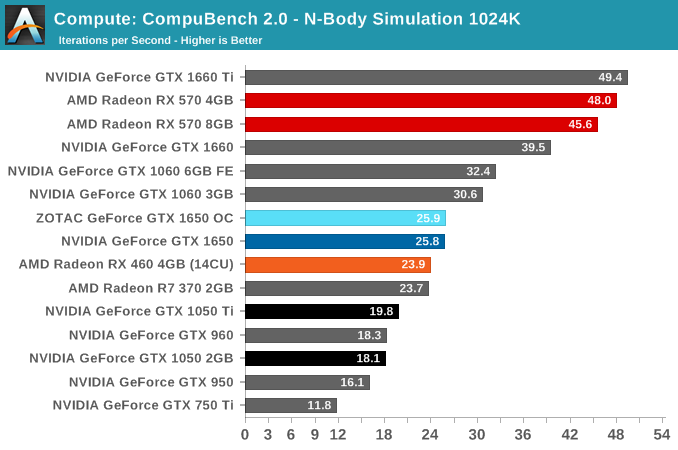
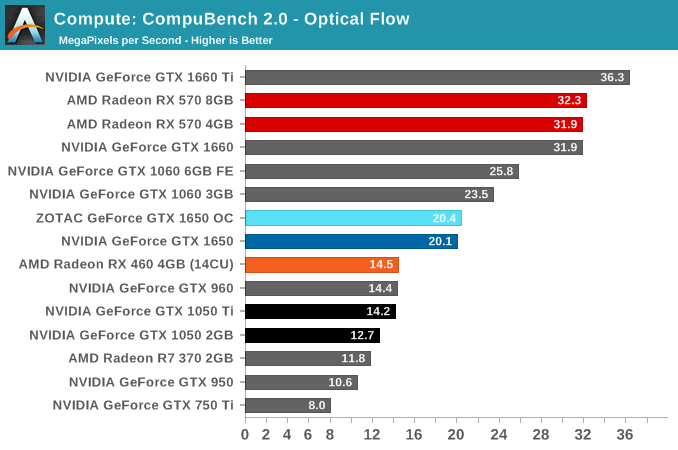
Moving on, we'll also look at single precision floating point performance with FAHBench, the official Folding @ Home benchmark. Folding @ Home is the popular Stanford-backed research and distributed computing initiative that has work distributed to millions of volunteer computers over the internet, each of which is responsible for a tiny slice of a protein folding simulation. FAHBench can test both single precision and double precision floating point performance, with single precision being the most useful metric for most consumer cards due to their low double precision performance.

Next is Geekbench 4's GPU compute suite. A multi-faceted test suite, Geekbench 4 runs seven different GPU sub-tests, ranging from face detection to FFTs, and then averages out their scores via their geometric mean. As a result Geekbench 4 isn't testing any one workload, but rather is an average of many different basic workloads.
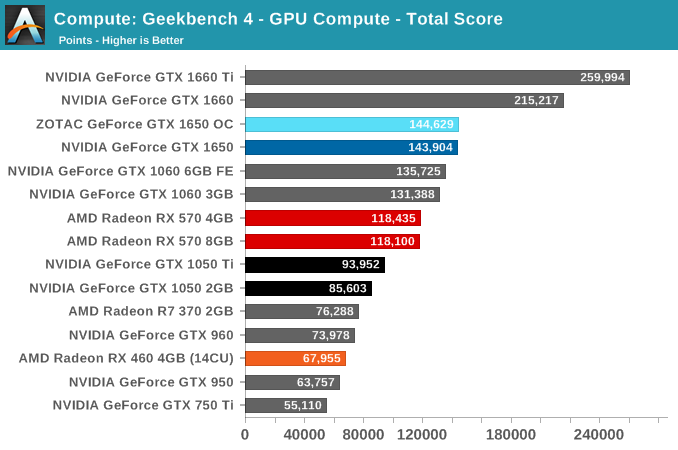
In lieu of Blender, which has yet to officially release a stable version with CUDA 10 support, we have the LuxRender-based LuxMark (OpenCL) and V-Ray (OpenCL and CUDA).
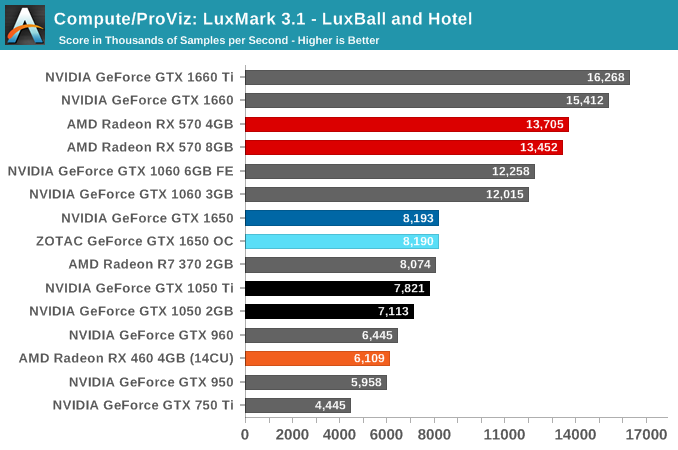
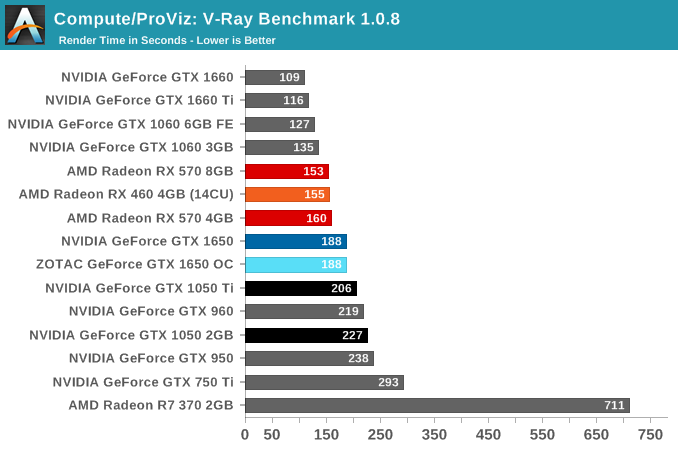
We'll also take a quick look at tessellation performance.
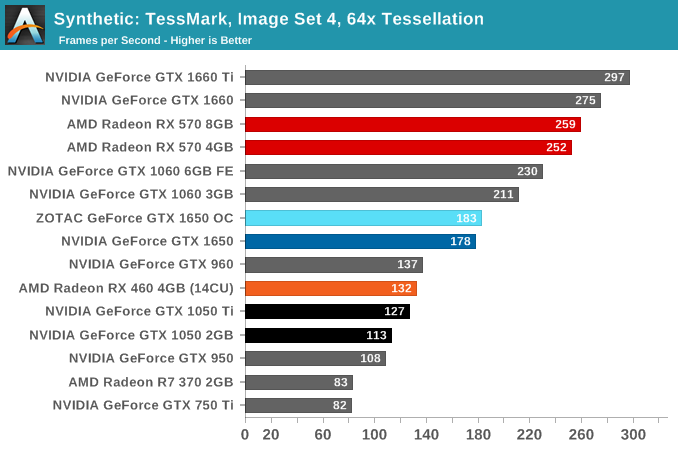
Finally, for looking at texel and pixel fillrate, we have the Beyond3D Test Suite. This test offers a slew of additional tests – many of which we use behind the scenes or in our earlier architectural analysis – but for now we’ll stick to simple pixel and texel fillrates.
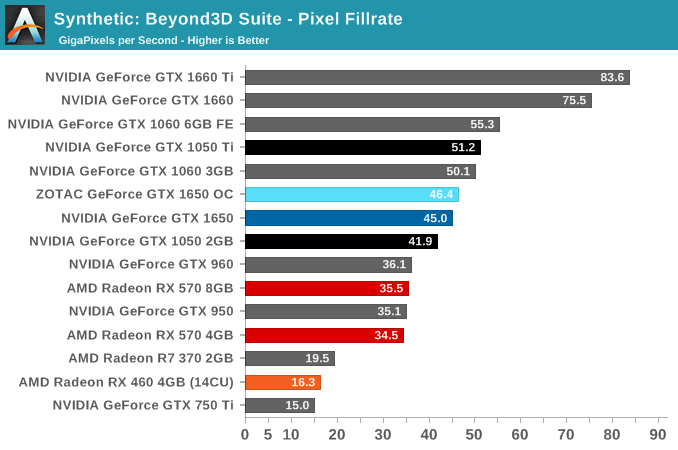

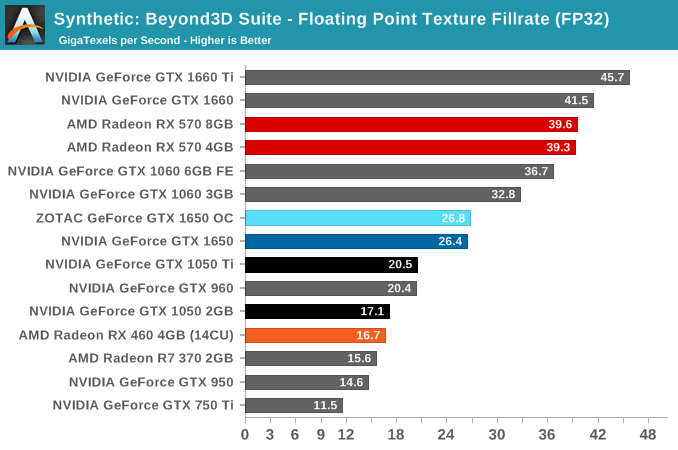










126 Comments
View All Comments
onbquo - Friday, May 3, 2019 - link
Why is it nobody talking about coming 7nm Radeons mopping the floor in the 75W segment?PeachNCream - Friday, May 3, 2019 - link
Because no one has been able to benchmark said graphics cards so no one knows if something is going to mop floors or just draw polygons. (Personally, I'm in for a GPU that will mop my floors for me. I'd also like one that will mow the yard, wash the dishes, and take care of the laundry.)onbquo - Friday, May 3, 2019 - link
Good point but I seriously believe the next architecture Radeon built on 7nm could perform almost twice as fast than a RX 560 with 1024 CUs. Am I the only one hyped for 7nm graphics cards?guidryp - Friday, May 3, 2019 - link
You are making a pile of assumptions with no evidence.Process bumps aren't the big win that they once were. Radeon 7 is 7nm and it didn't get twice as fast. RTX2080 outperforms it while using less power.
7nm is NOT a magic bullet. We need to wait and see what actually happens.
Cooe - Friday, May 3, 2019 - link
More recent benchmarking actually shows the RVII with the performance edge vs the RTX 2080 (AMD just completely botched the launch drivers-wise, as isn't particularly uncommon for them) as many recent videos have shown, but you're totally passing over the fact that it uses the exact same Vega architecture as 14nm Vega 10 but manages to outperform it by around 30% while pulling LESS power than a V64. That's nearly a 40-50% boost in power efficiency per fps, with absolutely no arch changes beyond 2x additional memory controllers. Even if Navi only matches that kind of efficiency bump vs Polaris it'll still be looking really good just as long as they maintain their performance advantage as well.guidryp - Saturday, May 4, 2019 - link
Better in one or two AMD favorable games, but not overall. Beating power of V64 is needed, but still doesn't come close to NVidia power usage.Oxford Guy - Saturday, May 4, 2019 - link
7nm TSMC isn't nearly as impressive as 5nm TSMC. 80% increase in density with 5nm. 7nm is a little bit sad, really. But, it saves companies money because it doesn't require nearly as much design rules modification, so porting existing 14nm stuff is much easier.PeachNCream - Tuesday, May 7, 2019 - link
I'm really looking forward to seeing what 7nm GPUs do once they hit the market, but I want to hold back on making judgements before we see what sorts of performance and power numbers emerge. I'm also more interested in mobile than desktop components because I have not put together or purchased a desktop PC in the past 5 years since I find laptops and phones a better fit in my living space and lifestyle.nevcairiel - Saturday, May 4, 2019 - link
Personally, the only reason I would ever care about a 75W card is for video duties - and AMDs video decoding/encoding is significantly worse then Intels or NVIDIAs. So there is that.I would be excited if they were trying to make a high-end 7nm card that doesn't suck, but apparently its once again just low-power cards. same old same old. I'm bored already.
Oxford Guy - Saturday, May 4, 2019 - link
"Personally, the only reason I would ever care about a 75W card is for video duties "Then the lack of B frame support in the encoder is a deal-breaker.